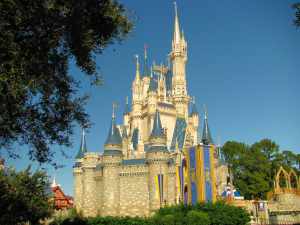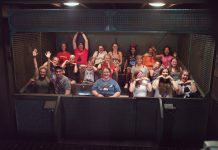Disney World is home to our favorite Dumbo and Cinderella. It is the land of delicious pretzels and dole whips. But, while these are the common facts, there are several secrets that many experts are also unaware of. In this post, let’s talk about Disney World local government and how the authorities are running it.
One of the first things that may come up to your mind is how Disney World is a universe in itself. For example, it is so different from the other parts of Orlando, and you are right!
Several aspects are involved that ensure that the park is running the way it is. Besides, that is how there is a Disney World local government that sets all the rules. While this may sound a little weird, it is undoubtedly the fact.
Have you heard of Ready Creek Improvement District?
Also stated as the RCID, the Ready Creek Improvement District is a multi-purpose area of the Disney World local government. Moreover, it is the part of this universe responsible for providing critical public services.
The RCID manages environmental protection policies, building codes, land usage, and more, according to sources. The District also supervises the proper operation of the entire Walt Disney World estate.
So, why is it called the Improvement District? The simple fact is that the RCID supervises the essential day-to-day activities of Disney World. This includes garbage collection, sewer services, fire protection, and more.
Moreover, these are all duties and responsibilities of Disney World towards its citizens. Also, the authorities receive taxes to fund such activities, which means they need attention.
The specific improvement district’s boundaries are set, and after it is legally founded, the district functions as a separate governmental unit, effectively a county.
The improvement district is then governed by a board of directors of property owners. Improvement districts have a wide range of capabilities, including levy taxes, managing pest management, contracting professional services, etc.
So, how did the RCID come into being? On May 12, 1967, Florida’s then-governor, Claude Kirk, signed a bill into law that established the RCID. Kirk also signed measures showing Bay Lake and Reedy Creek as incorporated cities under the RCID.

What Is the Role of the RCID?
The RCID’s responsibilities, according to its website, include overseeing land use and environmental protection and providing essential public services.
Moreover, the RCID may conceivably opt to build its airport or nuclear power plant if it wanted to. It can also issue tax-exempt bonds to fund renovations.
The RCID might conceivably opt to build its airport or nuclear power plant if it wanted to. It can also issue tax-exempt bonds to fund renovations.
While Disney has a great deal of control over the Walt Disney World area, it is also required to observe all state and federal rules and regulations, much like counties and cities.
Furthermore, the RCID gives no benefit to Disney regarding the payment of taxes. Everyone residing within the premises has to pay due taxes just like anybody else in Osceola and Orange counties. Disney must also collect and pay other taxes, like state sales tax and local tourism taxes.
What Is the Process?
So, in theory, the RCID can act as its county government, but how does that work practically? The RCID, like any county, imposes taxes and fees on its landowners (mainly Disney). The District then operates on that basis.
A Board of Supervisors governs the District. The landowners elect these people. After that, the Board meets once a month to conduct business. Keep in mind that the members of the Board must also be landowners.
Disney does this by selling undeveloped land to corporate executives so that they might become “landowners.” They must then sell their land back to Disney once their term on the Board has ended.
Property owners elect the Board of Supervisors in proportion to their land. Therefore, as the largest landowner in the RCID, Disney effectively controls the board.
What are the accomplishments of the RCID?
The RCID is its county government, but what has it accomplished in the last few years that makes it so unique? Quite a few things!
To begin with, it has done a great deal of recycling. The RCID reports that it recycles roughly 30 tons of metal, paper, plastic containers, and other materials each year.
And the RCID is responsible for several design and construction accomplishments on Disney property in Orlando that would not have been achievable otherwise.
The RCID created its own EPCOT Building Codes, which allow and encourage innovative design and construction techniques and the usage of novel materials. They’ve inspired some of Disney’s most innovative initiatives, such as constructing a fiberglass castle and Spaceship Earth, a miniature geosphere.

What is the significance of the RCID?
Based on all we’ve explored so far, it should be no surprise that the RCID is critical to how Disney World runs today. The RCID allows Disney World to have some authority over its land, allowing the company to do things that may not be possible otherwise. Moreover, it will enable them to build when and how they choose.
Without the RCID, new structures like a new castle will undoubtedly have to go through a municipal planning and zoning board. Moreover, they’d have to rely on local governments for critical services like garbage collection and fire protection. It was unlikely to be able to sell its bonds to fund the construction of parks or roads.
For Disney, the RCID is a game-changer
The RCID, as previously stated, allows Disney to support its infrastructure by levying property taxes within the district. Therefore, Osceola and Orange County residents will not be responsible for funding things like new roads or power substations that Disney will need to grow.
RCID has a huge budget that is beyond $169 million. The source of the money is the Disney property taxes that the parks pay on its land, which account for 90% of the total.
Before the RCID is officially disbanded, a few processes require completion. Financial impact studies are in demand by Florida politicians, while leaders in the counties are speaking out against the dissolution.
Unfortunately, the new statute is silent on how the local government of Reedy Creek will face transfer and dissolution.
Florida legislature might repeal or amend the bill or re-authorize Reedy Creek’s existence — possibly with some changes — in the year before the dissolution takes effect.
That’s a look at how Disney World local government has been running in various methods since its founding in Florida. It’s unclear whether Reedy Creek will endure or become a footnote in Disney’s history.






